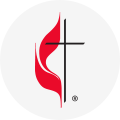Join us for a virtual gathering on ZOOM,
Thurs., Sept. 30th from 1 – 2:20 PM EST
Church World Service (CWS) is hosting a call for clergy and judicatory/regional/conference leaders to hear how faith communities can partner with CWS to welcome our Afghan allies and friends. This call will provide a programmatic update on our Afghan Assistance and Placement Program as well as an advocacy update from our CWS Advocacy Team. Attendees will also hear from our Faith Community Organizing Team and our Director of Community Sponsorship and Engagement about how congregations can get involved in welcoming Afghans to their communities. Attendees will leave this session with action items and resources to equip your congregation as you engage in welcoming Afghans to your community.
Register for the virtual gathering.

